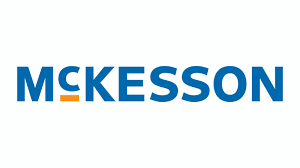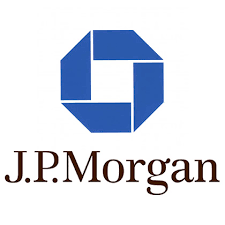In the contemporary global economy, a select group of corporations consistently dominate due to their scale, innovation, and strategic influence across industries. This article examines seven of the most prominent companies in the United States—Walmart, Amazon, Apple, UnitedHealth Group, Berkshire Hathaway, CVS Health, and ExxonMobil. These organizations are recognized not only for their vast revenues but also for their impact on sectors ranging from retail and cloud computing to healthcare and petroleum. The analysis highlights how each company has performed in the most recent fiscal year, with a focus on revenue changes, industry leadership, and significant business developments. Collectively, these corporations offer a clear representation of the driving forces behind the U.S. economy.
Top 20 US Companies by Profit in 2024
1. Walmart

Walmart is the largest company in the world by revenue and the top-ranked company in the United States. Known for its extensive network of hypermarkets, discount department stores, and grocery stores, Walmart has continued to dominate the retail sector through competitive pricing and logistical efficiency. The company has steadily expanded its e-commerce operations to keep pace with online trends, while also increasing investment in automation and supply chain innovation. In the most recent fiscal period, Walmart saw its revenue increase by 6.0%, reflecting growth in both in-store and online sales.
Revenue: $648.13 billion
2. Amazon

Amazon is the second-largest company in the U.S. by revenue and the leader in online retail and cloud computing services. Its success is largely driven by customer-centric innovations like Prime membership, which offers fast shipping and media content. Amazon Web Services (AWS) remains the dominant player in the global cloud infrastructure market, contributing significantly to profitability. In the latest fiscal year, Amazon’s revenue grew by 11.9%, a result of increased demand in both e-commerce and cloud services, despite economic headwinds.
Revenue: $574.79 billion
3.Apple

Apple, a giant in the electronics and consumer technology sector, generates most of its revenue through the iPhone, along with its services segment that includes iCloud, Apple Music, and the App Store. While the company continues to innovate with its product line and services, macroeconomic conditions and saturation in smartphone markets led to a modest revenue decline. Apple experienced a decrease of 2.8% in revenue, signaling a period of slower growth despite strong brand loyalty and ecosystem engagement.
Revenue: $383.48 billion
4. UnitedHealth Group

UnitedHealth Group is the largest healthcare company in the U.S. by revenue, operating through two main businesses: UnitedHealthcare (insurance services) and Optum (health services and data analytics). The company has maintained consistent growth through a diversified portfolio, expansion into digital health services, and strategic acquisitions. UnitedHealth Group reported a revenue increase of 14.6%, underlining its ability to scale operations and respond to growing demand in the healthcare sector.
Revenue: $371.62 billion
5. Berkshire Hathaway

Berkshire Hathaway is a massive conglomerate with holdings in insurance, utilities, railroads, manufacturing, and a substantial equity portfolio including major shares in Apple, Coca-Cola, and American Express. Managed by Warren Buffett, the company’s decentralized model allows each subsidiary to operate autonomously while benefiting from strong capital allocation at the top. In the past year, Berkshire Hathaway’s revenue grew by 20.7%, driven by strong performance in energy and manufacturing segments.
Revenue: $364.48 billion
6.CVS Health
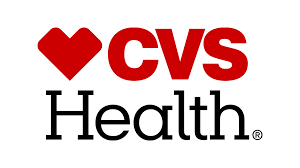
CVS Health is a diversified healthcare company combining a retail pharmacy chain, pharmacy benefits manager (Caremark), and health insurer (Aetna). This integration has enabled the company to create a vertically coordinated system for delivering affordable healthcare. Its recent growth has been supported by expanding clinical services and increasing health plan enrollments. CVS Health saw a 10.9% rise in revenue, reflecting its growing role in both healthcare access and insurance markets.
Revenue: $357.78 billion
7. ExxonMobil

ExxonMobil is one of the world’s largest publicly traded oil and gas companies, operating across upstream (exploration and production), downstream (refining and marketing), and chemical segments. Despite global energy demand, ExxonMobil experienced a 16.7% decrease in revenue in the latest fiscal year, primarily due to falling oil prices and weaker refining margins. However, the company continues to invest in carbon capture and low-emissions technologies as part of its longer-term strategy.
Revenue: $344.58 billion
8. Alphabet

Alphabet, the parent company of Google, remains one of the most influential technology and cloud computing firms in the world. It dominates global digital advertising through Google Ads and YouTube while also expanding in cloud infrastructure with Google Cloud. Alphabet continues to invest heavily in AI development, autonomous vehicles (Waymo), and health-tech initiatives.
In 2024, Alphabet saw revenue rise by 8.7%, thanks to a rebound in advertising demand, stronger performance in cloud services, and growing contributions from YouTube subscriptions and Pixel hardware sales.
Revenue: $307.39 billion
9. McKesson Corporation
McKesson is a major player in the health sector, primarily focused on pharmaceutical distribution and healthcare supply chain management. It provides services to pharmacies, hospitals, and clinics across North America. The company’s ability to streamline logistics and ensure reliable drug delivery made it a critical link in the healthcare system.
Revenue for McKesson rose by 4.8% in 2024. This moderate growth was driven by increased prescription drug volumes and enhanced partnerships with hospitals and long-term care facilities.
Revenue: $276.71 billion
10. Cencora (formerly AmerisourceBergen)

Cencora, a leading pharmaceutical wholesale distributor, plays an essential role in ensuring medications reach patients efficiently across the healthcare ecosystem. The company rebranded in 2023 to emphasize its broad, global role in pharmaceutical distribution and logistics innovation.
In 2024, Cencora reported a 9.9% revenue increase, reflecting both higher volumes of specialty drugs and expanded distribution partnerships. Its strong global supply chain network and investments in biosimilars also contributed to this growth.
Revenue: $262.17 billion
11.Costco
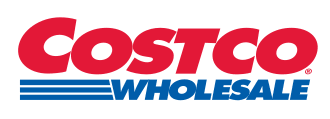
Costco is a highly successful retail chain known for its membership-based warehouse stores. It continues to expand both its U.S. and international footprint, offering bulk goods, private label products, and high customer satisfaction. E-commerce and same-day delivery partnerships also boosted performance.
In 2024, Costco’s revenue increased by 6.8%, supported by strong consumer demand for groceries, household items, and inflation-resilient value offerings. Membership renewals remained high, ensuring recurring income.
Revenue: $242.29 billion
12.JPMorgan Chase
JPMorgan Chase is the largest U.S. bank and one of the most powerful financial institutions in the world. It provides banking, investment, and asset management services. In 2024, the bank posted an impressive 54.7% surge in revenue, driven by high interest rates, strong loan demand, and major gains in its investment banking and trading divisions.
The bank's strategic expansion into fintech and digital platforms also helped attract a younger, tech-savvy client base. JPMorgan’s robust performance underscored its role as a financial leader during a volatile economic period.
Revenue: $239.43 billion
13. Microsoft
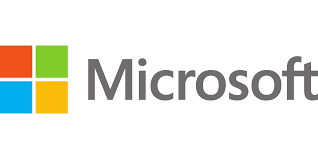
Microsoft remains a dominant force in technology and cloud computing. The company has seen continued growth across its cloud services division, especially with Azure, which has become a major contributor to its enterprise success. Microsoft’s business model, centered on subscriptions for services like Office 365, Teams, and Dynamics 365, ensures a steady and scalable revenue stream.
The company also expanded its investments in AI and cloud infrastructure, including new partnerships and acquisitions that further strengthen its position in the global market. In 2024, Microsoft’s revenue rose by 6.9%, supported by consistent demand for cloud computing and enterprise software.
Revenue: $211.92 billion
14.Cardinal Health

Cardinal Health is a key distributor of pharmaceuticals and medical products in the U.S. healthcare sector. The company plays a critical role in supplying hospitals, pharmacies, and care facilities. In 2024, revenue increased due to rising demand for specialty drugs, expanded supply contracts, and operational efficiencies in distribution logistics.
Cardinal Health also benefited from a rebound in elective procedures post-pandemic and growth in its medical segment. Revenue grew by a healthy 13.0%, reflecting the company’s adaptability and critical infrastructure in the healthcare supply chain.
Revenue: $205.01 billion
15.Chevron Corporation
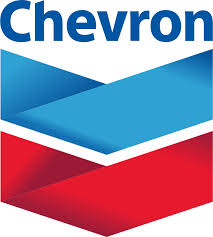
Chevron, one of the largest oil and gas companies in the world, faced a difficult year in 2024. Global energy prices showed volatility, and reduced demand in some markets led to decreased production levels. Despite efforts to diversify its energy portfolio, including modest investments in renewable energy and lower-carbon technologies, Chevron experienced a sharp 18.4% decline in revenue.
This decrease was largely attributed to lower crude oil prices and declining refining margins, especially compared to the elevated levels seen in the prior year.
Revenue: $200.95 billion
16.Cigna
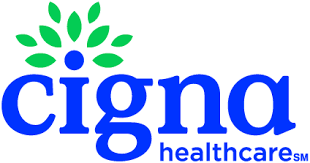
Cigna is a major player in the U.S. health insurance market, offering medical, dental, behavioral health, pharmacy, and Medicare/Medicaid plans. In 2024, the company reported solid performance driven by expansion in its government health programs and pharmacy benefit management services.
Cigna’s focus on value-based care, digital health platforms, and personalized wellness programs led to stronger member retention and acquisition. Revenue increased by 8.2%, driven by growth in both commercial and government health insurance markets.
Revenue: $195.27 billion
17. Ford Motor Company

Ford Motor Company continues to be a major player in the automotive industry, with a renewed focus on electric vehicles and digital transformation. In 2024, Ford expanded its EV lineup and increased production capacity to meet demand in both domestic and international markets. Its F-150 Lightning and Mustang Mach-E models were particularly successful.
Ford’s efforts to streamline manufacturing, reduce costs, and increase profitability paid off. Revenue grew by 11.5%, reflecting both the rising popularity of its EV offerings and a stable recovery in global vehicle sales.
Revenue: $176.19 billion
18.Bank of America

Bank of America is one of the largest financial institutions in the United States, serving individuals, businesses, and large corporations with a broad range of financial products and services. In 2024, the company experienced a significant rebound in its performance, fueled by rising interest rates and improved consumer banking activity. A sharp increase in net interest income and wealth management services contributed to its impressive revenue growth. Digital banking adoption also surged, enhancing operational efficiency and expanding its customer base.
In particular, Bank of America saw a 49.4% increase in revenue, one of the largest jumps among financial institutions. This surge reflected both higher loan demand and better returns on deposits.
Revenue: $171.91 billion
19. General Motors
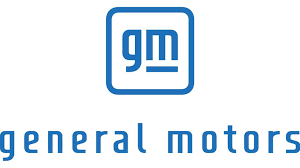
General Motors (GM), a leader in the automotive industry, has been investing heavily in electric vehicles (EVs) and autonomous driving technologies. In 2024, the company launched several new EV models under its Chevrolet, Cadillac, and GMC brands, helping boost sales and improve its market share in North America. GM’s cost-reduction efforts, improved supply chain management, and increased demand for fuel-efficient vehicles all contributed to revenue growth.
GM also benefited from a resilient auto market, as consumer demand for both traditional and electric vehicles remained strong. Revenue rose by 9.6%, reflecting its strategic shift toward future mobility and continued recovery from supply chain disruptions experienced in prior years.
Revenue: $171.84 billion
20.Elevance Health
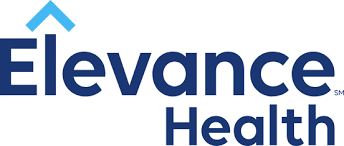
Elevance Health, formerly known as Anthem Inc., is a major player in the U.S. healthcare insurance market. The company provides a range of health insurance and wellness services to individuals, employers, and government programs. In 2024, Elevance continued to expand its Medicaid and Medicare Advantage segments, which were key drivers of revenue growth. The integration of technology and digital health tools also improved member engagement and healthcare outcomes.
Elevance's focus on value-based care and coordinated services led to strong financial performance. The company posted a 9.4% increase in revenue, reflecting higher enrollment and greater utilization of its diversified healthcare offerings.
Revenue: $171.34 billion

